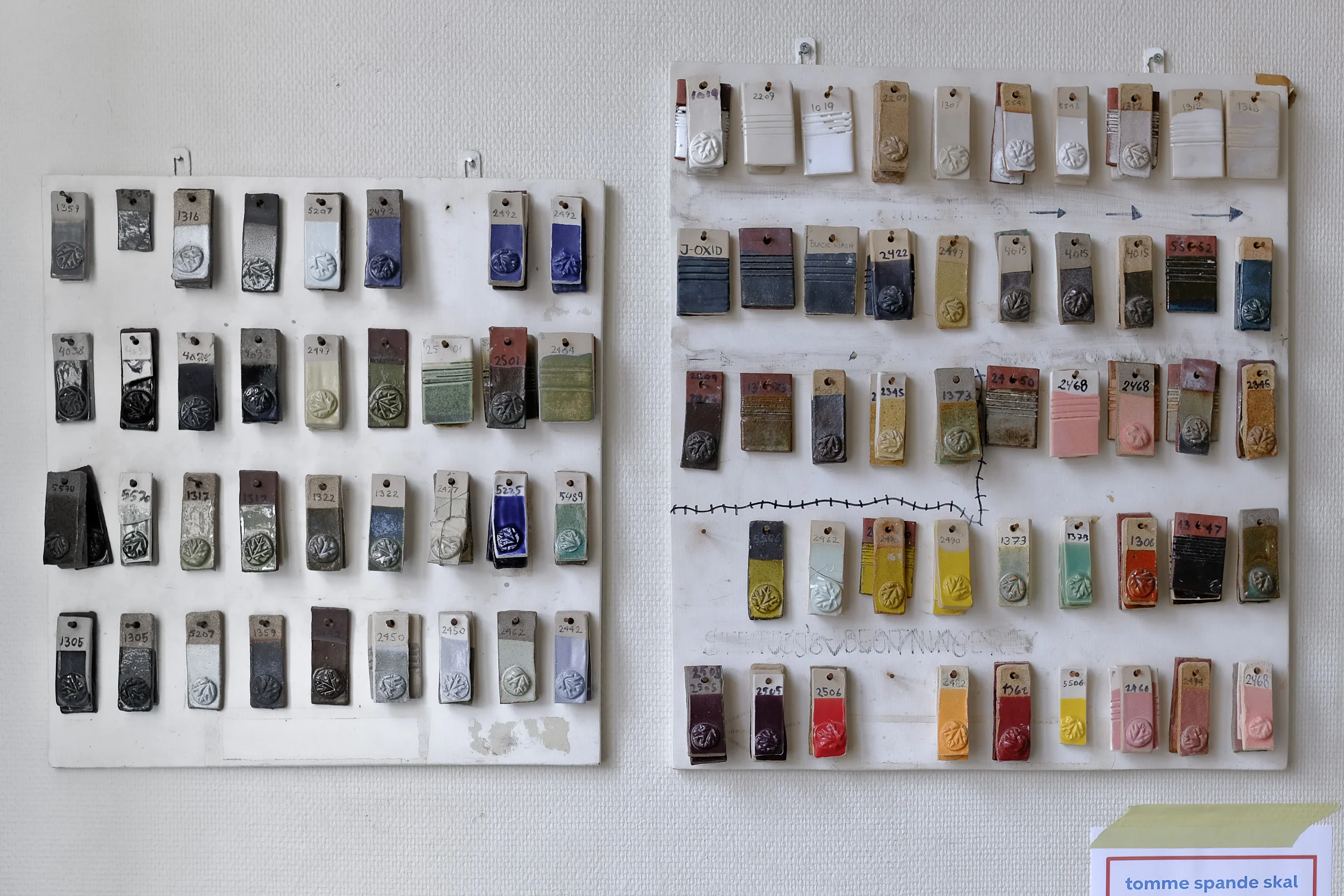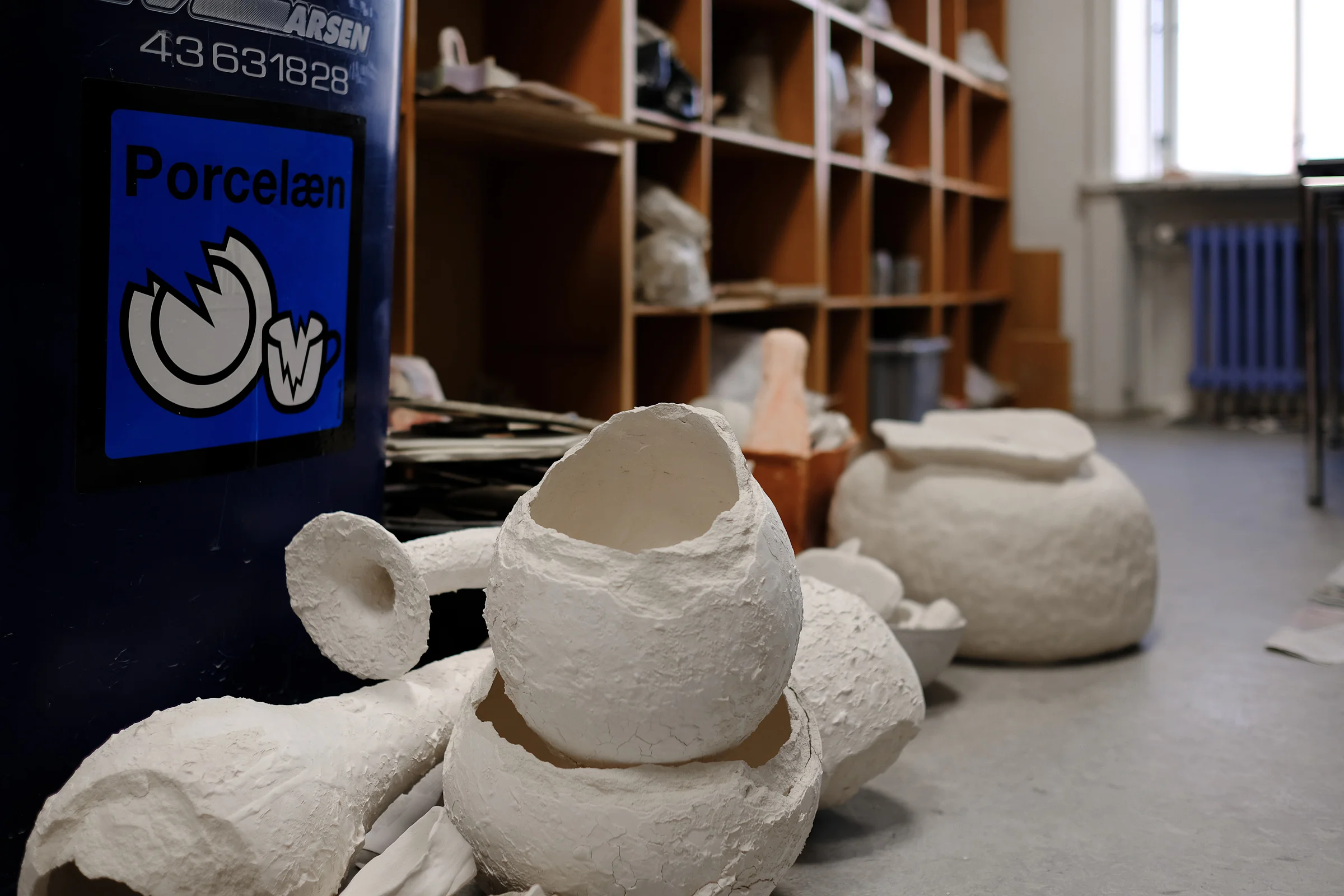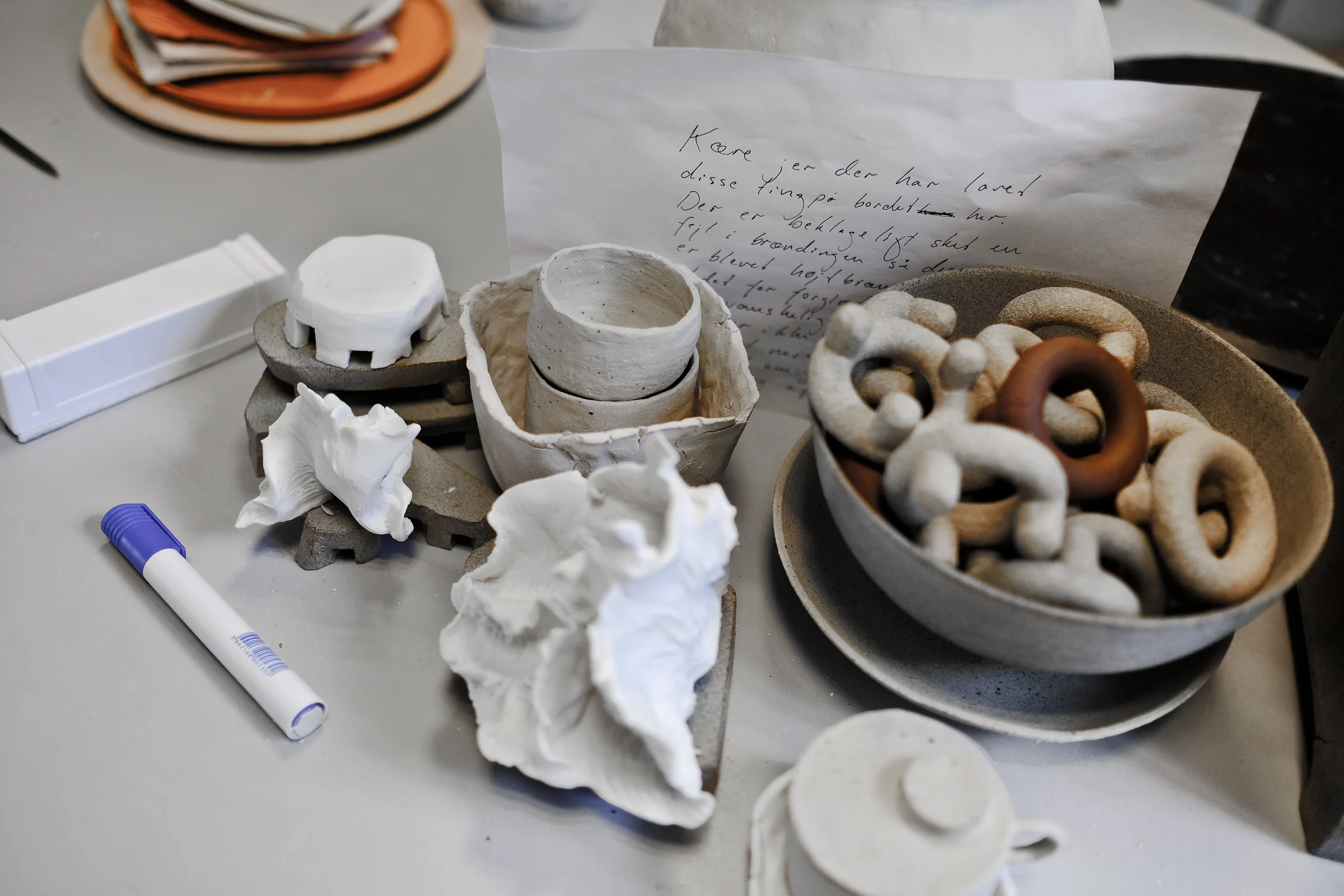Warning: if you’re a ceramicist without a kiln, you’re about to really wish you lived a bike ride away from the Vesterbro Bibliotek in Copenhagen. (On the other hand, if pottery is a lukewarm subject for you, this whole post might be a waste of your time. Unless of course you’re interested in how societies work, in which case this should be a worthwhile case study.)
Officially, it’s known simply as the keramikværksted, which is Danish for pottery workshop, and it occupies a sprawling, light-filled space on the third floor of the building that houses the local public library and community center. Though the studio is under member management as far as most operations are concerned, technically it is not a co-op, because it’s financed and ultimately governed by the municipality. Nevertheless, the spirit is that of a well-oiled collective in synchronized motion. Here, pragmatism, dependability, and eagerness combine with the sort of delight in following the rules that defines much of day-to-day living in Denmark.
Before we continue, let’s look at some photos. If you get through all forty and decide you haven’t had enough, keep reading for more on this amazing collaborative center that gives hundreds of clayworkers a home.
Everyone is welcome, just as long you’re a hobbyist and pottery isn’t your day job. But first, you’ll have to show up on time to an intro session held by a couple of enthusiastic representatives of the Orientation Team. That’s when you’ll learn about all the neat rules that make cooperation at this scale possible. After all, you’re about to join nearly five hundred other people in a very polite kind of competition for resources, privileges, and shelf space in the four high-firing 190-liter front-loading electric kilns.
The first thing you’ll learn is how you need to stick to the clays and glazes stocked by the studio. They’re (a) calibrated for the agreed-upon firing temperatures, (b) non-toxic, and (c) unlikely to react with each other in ways that make things melt or explode during firing. You’ll also learn all about how you have to set your glazed ware on studio-supplied tiles for the final firing, so that any drips from excess glaze fuse your project to a disposable tile and not to an in-demand piece of kiln furniture.
Next, you’ll be instructed that only the Kiln Firing Team can load kilns, and only the Glaze Mixing Team can mix glazes. You will also come to understand how members join different groups and you’ll have a chance to sign up for one that matches your schedule and eligibility level. From washing floors to restocking supplies, there’s something for everyone. (But if being on a team isn’t for you, it’s possible to fulfill your contribution requirement by participating in something like open cleanup or drip-catcher-tile production every six months or so.)
Clay, you’ll find out, is purchased by weight on an honor system and it’s the only expense you’ll be covering in addition to the modest membership fee of DKK 350 per half-year (that’s less than €50). So you pay for the clay (there’s a dozen types and colors to choose from, including porcelain, which costs a little extra), but then your glazes, firings, and re-firings come at no additional cost.
You’ll discover that you can save on clay altogether if you help yourself to the genbrugslær, which is discarded greenware that accumulates in the studio, but first you’ll have to attend a class on reconstituting hard clay. (That one’s led at what is likely a fixed monthly time by veterans of the Recycled Clay Team, and all the information about how to sign up and what to expect can be found on the impressive information board near the entrance.)
You’ll also learn that there are time limits for collecting your bisqueware and glazed work, and that they are helpfully listed according to a straightforward system every time the kilns are unloaded, which is often. (If you are a foreigner, you might eventually wind up shocked to discover that no one feels terrible for you if your work gets tossed because you were late picking it up.)
Finally, you might put your name on a grey plastic box, in which you’ll be able to store your personal kit for the duration of your membership (this brings your base fee up by a fraction). Intermittently, it shall be explained, boxes will be sealed with a strip of masking tape and reclaimed if a seal is identified as unbroken two weeks hence. (Again, no one will cry for you if you miss the memo.)
That everyone is expected to clean up after themselves and put things back in their place will not warrant repeating in Scandinavia, but should you ever forget, fellow studio members will not hesitate to help you remember.
Studio hours? Round the clock, sort of. The doors are locked for entry at 10:00 pm, but you can stay and work longer provided you’re in by closing time. Just remember to shut off the lights if you’re the last to leave.
Note: The photos were taken by the author in August 2019 with the Fujifilm X-T20 and a small fleet of prime Fujinon lenses. I’m sharing them here based on the type of implicit permission that comes with nobody protesting that I snap away. If anyone wants anything taken down, just let me know. Also—if you’re affiliated in any way with the Keramikværksted or the Vesterbro Bibliotek og Kulturhus—you have my permission to use the images however you like according to the terms of the Attribution-NonCommercial Creative Commons license. (As for permission from the people in the pictures—you’ll have to get that yourself.) Oh, and I owe a very special thanks to Marta for letting me tag along to the studio and bother her with all the questions I had as I worked on this post.







































